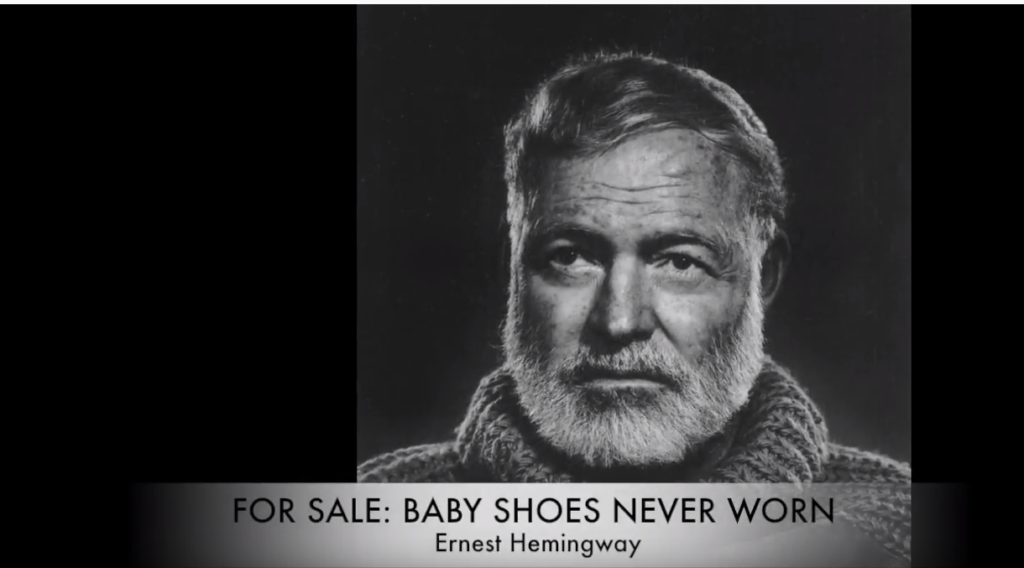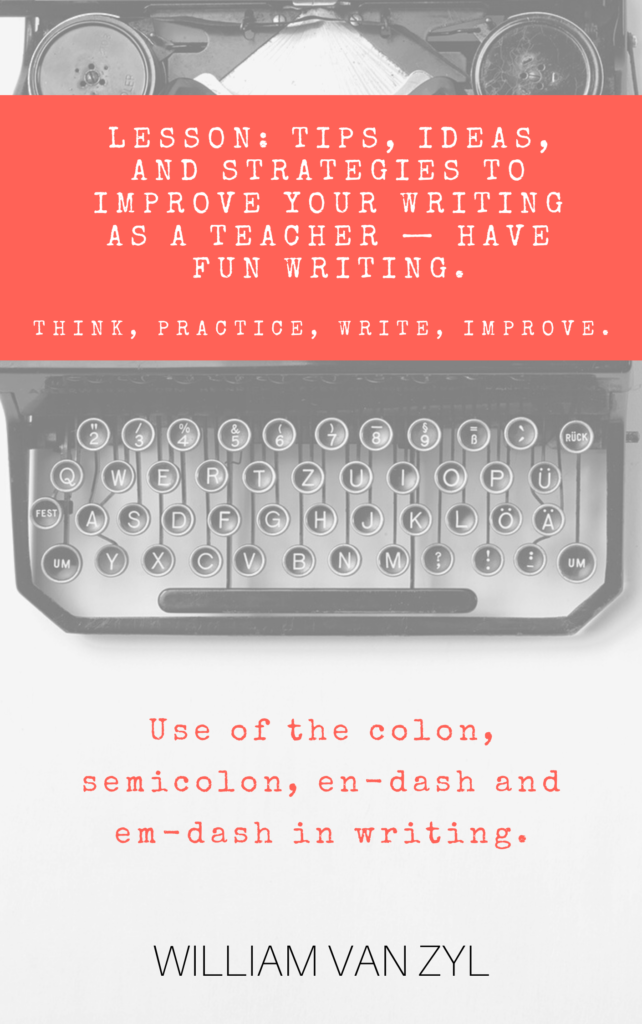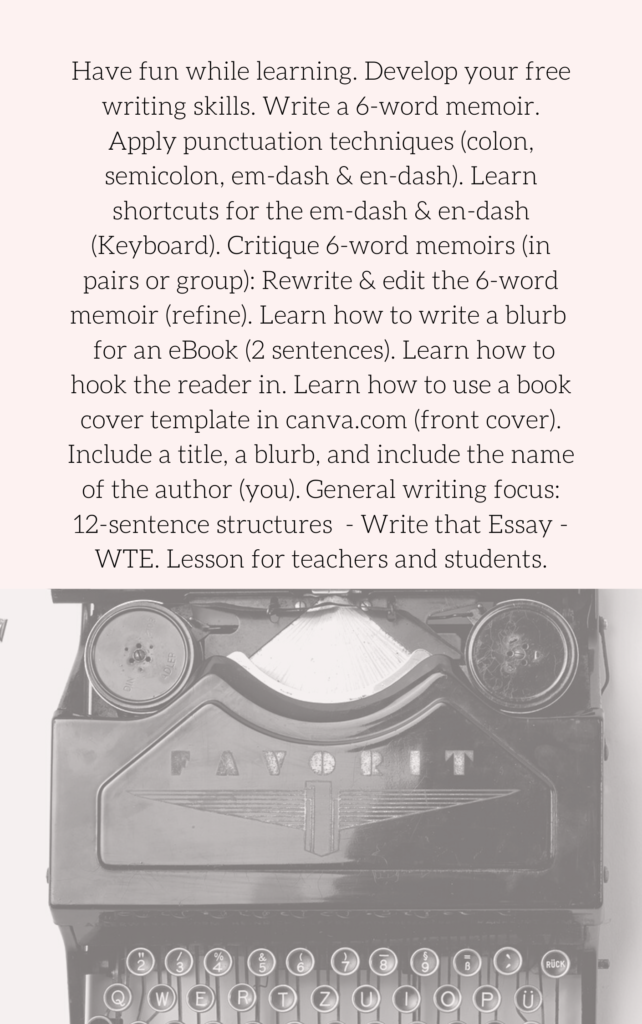$0.00
Learning intentions: To develop teacher’s and student’s writing skills.
- Have fun while learning
- Develop free writing skills
- Write a 6-word memoir.
- Apply punctuation techniques (colon, semicolon, em-dash & en-dash)
- Learn shortcuts for the em-dash & en-dash (Keyboard)
- Critique 6-word memoir (in pairs or group): Rewrite & edit the 6-word memoir (refine).
- Learn how to write a blurb (2 sentences). How to hook the reader in.
- Learn how to use a book cover template in canva.com (front cover). Include a title, a blurb (hook the reader in) and include the author’s name.
- General writing focus: 12-sentence structures – Write That Essay (WTE).
Description
Use of the colon, semicolon, en-dash and em-dash in writing.
Overview of the 45-minute session: ‘Imagine you’re an author’
- DO NOW: Six-word memoirs (https://www.sixwordmemoirs.com/)Video: https://youtu.be/0X-OYYOt2SE, https://youtu.be/JSlen-udJ5
- Discuss in groups: Hemingway’s 6-word memoir
- Do 3-minute freewriting on own memoir
- Videos: En-dash, Em-dash, Colon & Semicolon.
- Shortcut: En-dash & Em-dash
- Collaboration: Discuss 6-word memoir. Critique in groups/pairs. Develop a memoir using punctuation techniques.
- Use this 6-word memoir as a title for a short story (fiction or true story).
- Write 2 to 3 sentences (a blurb) for the eBook (your short story). Use the 12 sentence structures and punctuation.
- Graphic Design: Design a simple book cover on Canva (canva.com). Create a user account. Type up the blurb for the cover (2 to 3 sentences). Use the 12-sentence structures and punctuation.
- Share your work in your group/pair.
Ernest Hemingway was asked to sum up his life in six words. This is what he presumably came up with:
For sale: baby shoes, never worn.

Ernest Miller Hemingway (1899 – 1961) was an American journalist, novelist, short-story writer, and sportsman. His economical and understated style—which he termed the iceberg theory, strongly influenced 20th-century fiction. At the same time, his adventurous lifestyle and his public image brought him admiration from later generations. See his ingenious six-word story. If you are interested in the Iceberg Theory of Hemingway (Spark Notes), read a concise explanation here: https://www.sparknotes.com/short-stories/hills-like-white-elephants/section2/
 Credit: Steve Bowbrick. Flickr.com Are you intrigued? There are many interpretations! Do you want to learn more? Do you want to create your own six-word biography? You will learn heaps about yourself. Visit Five House Publishing for a free copy of this lesson. Have fun!
Credit: Steve Bowbrick. Flickr.com Are you intrigued? There are many interpretations! Do you want to learn more? Do you want to create your own six-word biography? You will learn heaps about yourself. Visit Five House Publishing for a free copy of this lesson. Have fun!
EXCERPT: Now it is your turn: Create your 6-word memoir.
- Think about a memory from your past – 2 minutes (a rich, layered one). Discuss in your group/pair
- In your notebook free-write for 3 minutes (topic = a memoir)
- Once you have completed your freewriting, circle the most important words in your writing about the memory.
- Use the words you have identified as important to create the 6-word memoir.
- Please write it down in your notebook.
- On the coloured cardboard (size A5): On the front — at the top — write the 6-word memoir. Right at the bottom, write your name (as the author of a book would).
- Hint: You will write 3 x 6-word memoirs — on the front page of your book — with your name at the bottom.







